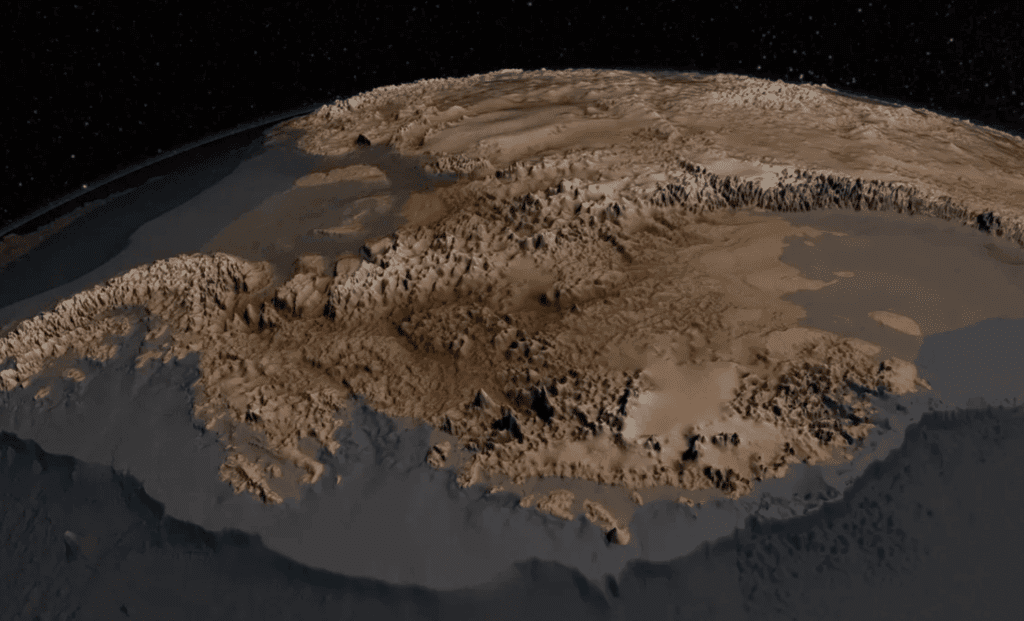The article discusses the discovery of a hidden, rugged continent beneath Antarctica’s ice, unveiled through the Bedmap2 dataset released by NASA and the British Antarctic Survey (BAS). This new dataset provides detailed images of Antarctica’s geological features, revealing complex landscapes of mountains, valleys, and canyons, some of which are deeper than previously thought.
The findings transform scientists’ understanding of ice dynamics, as the subglacial topography greatly influences glacier movement and melting. For instance, valleys like the one beneath Byrd Glacier reach nearly 2,870 meters (9,416 feet) below sea level, which is critical for predicting glacier behavior and, consequently, global sea level rise.
Current projections estimate that if all Antarctic ice were to melt, global sea levels could increase by about 58 meters (190 feet), and sea levels are currently rising by approximately 4 millimeters annually, largely due to melting ice sheets. The article emphasizes the importance of the upcoming Bedmap3 project, which aims to provide even more detailed insights into the changing Antarctic landscape and its implications for global climate policy and future sea level projections. Overall, these findings highlight the intricate relationship between ice dynamics and climate change, underscoring the urgency of understanding Antarctica’s evolution in a warming world.
Source link


